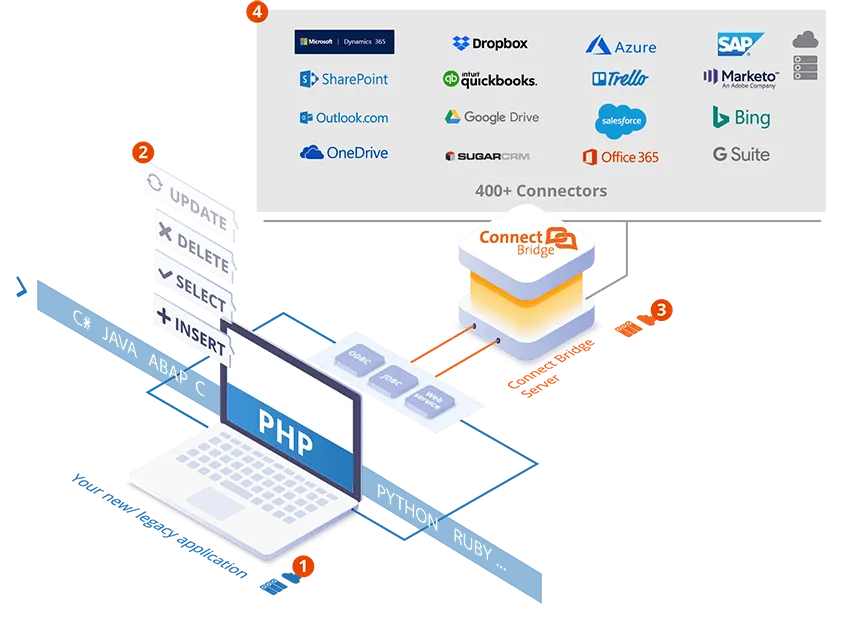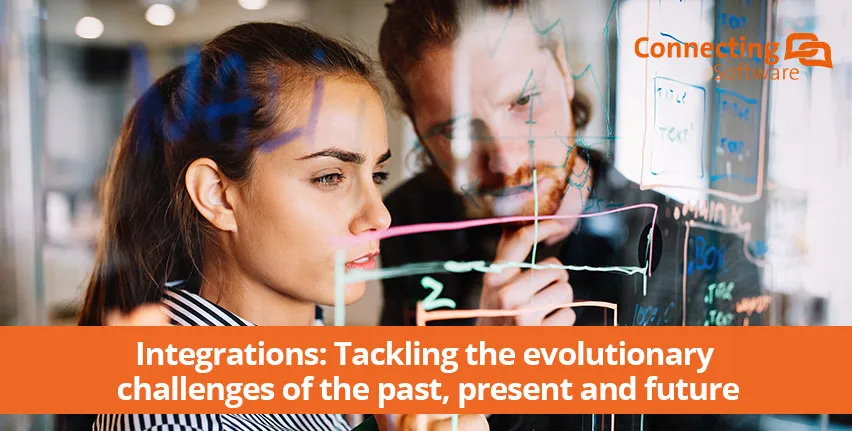Introduction
Today, successful enterprises rely heavily on underlying software applications. To meet prevalent diverse business requirements, enterprises must pick and choose different software applications that have been created with disparate technologies and built by different vendors. When the enterprise needs to fulfill a given set of business requirements, most often they must make these disparate software applications work together to produce a unified set of functionalities.
Enterprises often encounter dealing with applications built by varied vendors when some of these applications are based on proprietary standards and others built with open standards. These challenges can be addressed with the use of architectural styles and enterprise integration technologies that lie within a comprehensive integration platform.
A history of software integration
Over several decades, enterprise integration technologies have leveraged one or more of the integration styles such as EDI files, RPC and CORBA. The evolution of software integration was driven by the evolution of enterprise requirements.
In the early stages of enterprise integration, most organizations wanted to integrate their in-house software applications or their partner’s software applications and met their integration requirements by implementing in-house integration solutions using ad hoc and proprietary protocols.
Eventually, with the addition of multiple software systems and the wider spread of internal and external networks the home-grown solutions were no longer enough. This is when the rise of APIs began.
APIs come out on top
APIs emerged as a way of exposing business functionalities that were provided by one application to another application. From the very beginning they were created to be reused – multiple applications could consume the same API. Still, they were created for point-to-point connectivity between applications.
However, with this approach, creating each point-to-point connection involves time, effort, and maintenance, creating even more time and more effort in the future. With a multitude of point-to-point connections, all of which involve maintenance, organizations end up focusing more on solving its integration problems rather than focusing on the business functionality of the solution.
The need for API management
The discovery, access, interface, and format of APIs are not standardized leading to fragmentation of programming languages, frameworks, and developer consumption models such as containers and serverless to deal with complexity. Additionally, more companies have created business processes outsourcing initiatives to offload responsibility to reduce cost and risk, further increasing the amount of integrations in their environments.
As a result of sheer demand, API management has emerged as a way of using APIs in a more manageable and straightforward way. Third-party middleware is filling the gaps and becoming the software glue. Just as the business world has chosen English as the communication language so companies can communicate with one another, programming languages too can have a translated standardized language to ensure they can communicate with one another. By using a translating middleware, a developer no longer needs to learn a new programming language or gain expertise in the target system, drastically reducing the amount of time to integrate software.
Connect Bridge is one such middleware that has eliminated the need to call APIs directly by using its connectors to translate ANSI standard SQL syntax into API calls.
Using Connect Bridge, the developer can now either build their own custom integration software in Java, Python, C#, COBOL or any other programming language of their choice or change the source code of any software from the past 40 years. It will require few lines of code and be quite straightforward.
Middleware also takes away the need for developers to maintain the connection, considering the maintenance efforts are managed by the middleware company itself and guarantees forward and backward compatibility.
Ultimately, API management gives enterprises greater flexibility when reusing the functionality of API integrations and helps save time and money without trading off security eg. maintaining GDPR compliance.
An evolution of the term integration
What we have long considered to be integration between systems will now become “communication.” The term integration will then move away from software-to-software environments and will rather be used in the smart hardware-to-software environments.
Industry 4.0 is a vision that evolved from an initiative to make the German manufacturing industry more competitive (‘Industrie 4.0’) to a globally adopted term.
Industry 4.0 is often used interchangeably with the notion of the fourth industrial revolution. It is characterized by, among others, 1) even more automation than in the third industrial revolution, 2) the bridging of the physical and digital world through cyber-physical systems, enabled by Industrial IoT, 3) a shift from a central industrial control system to one where smart products define the production steps, 4) closed-loop data models and control systems and 5) personalization/customization of products.
The goal is to enable autonomous decision-making processes, monitor assets and processes in real-time, and enable equally real-time connected value creation networks through early involvement of stakeholders, and vertical and horizontal integration.
The agriculture industry is embracing such smart technology. From autonomous harvesting robots and drones that can spray crops, to artificial intelligence, and the use of "big data", farmers around the world are turning to high-tech solutions to address issues ranging from food insecurity, to climate change, and pandemic-induced staff cuts.
Collectively, this increased use of technology in agriculture is known as "precision farming", and it is a booming industry. One report suggests that its global value will reach $12.9bn (£9.1bn) by 2027, with average annual growth of 13% between now and then.
Future integration challenges and how to approach them using today’s technology
Digital Factories
Despite production plants and agriculture having grasped the essence of the Industrial Internet of Things, they often fail to make the most out of the transformation due to a lack of data integration. As more use-cases are identified for smart hardware, the need to integrate the data into the respective CRM’s, ERP’s and MES’s becomes imperative. If the machine data were accessible in the ERP, CRM or MES (known as “device to the enterprise”), management would then have the capability to make smart, real-time, decisions to separate themselves from the competition. Middleware, being the integrator between machine and software, enables the company to be transparent and agile in the steering of their business processes and key decisions while focusing on the tasks at hand that keep the business growing and allowing the machines to truly work for them.

Security concerns
With the introduction of middleware, and as it becomes best practice, trust, safety and security concerns come into play. Blockchain seals are becoming the standard to ensure trust in your data from clients, partners, and regulators, being the up-to-date solution to the issues of data compliance, storage and auditability.
In Industry 4.0 you can seal machine reports, SCADA or PLC data right from the machine or a business application and prove the validity of any process if the need arises. Perhaps you require irrefutable proof that nobody interfered in the production process, or that temperature, raw materials, other features, and components were in a particular state, or with deviations. Or perhaps a factory equipment provider that seals machine reports can obtain 100% tamper-proof evidence about machine performance in case of any issue with the equipment or the product to reduce liability risk. Integrations will no longer be scary and expensive but rather safe, secure and trustworthy with a high ROI.

Machine Learning and Artificial Intelligence
The deployment of machine learning and artificial intelligence has increased exponentially over the past several years. However, companies often make the mistake of implementing such technologies prior to consolidating their ML training data requirements for AI into a centralized shared service that can be utilized across the multitude of data science projects within the enterprise.
One of the main reasons for this is a lack of integration between systems and databases. Simply put, a machine learning model is only as good as the data it is fed. This data has to not only be available, but also cleansed and prepped in an efficient and reliable manner before being passed into the model. Without the data, your model is useless. Integrating the various systems using a middleware can drastically enhance the quality of training data and ultimately the end result, providing key insights to the business to steer the company accordingly.
Summary
Integrations have long been a pain point for businesses, often leading companies to either stick to their legacy systems and suffer the consequences or else fork over large sums of money on developers to migrate to the latest and greatest. But integrations do not have to be the scary word it once was. Using technology of today can easily solve the current integration challenges as well as prepare companies for the future. Whether it be to satisfy the implementation of smart hardware, machine learning, artificial intelligence, or to simply migrate or share data between systems, integration possibilities are at your fingertips by utilizing API middleware, which keeps down cost and maintains the highest level of security.

Adam Maurer
COO at Connecting Software
Author:
I am the Chief Operating Officer for Connecting Software, managing the day-to-day operations throughout our various locations. I am passionate about continuous improvement and increasing efficiency. If you want to join our amazing team either in Slovakia or Madeira, please reach out.
